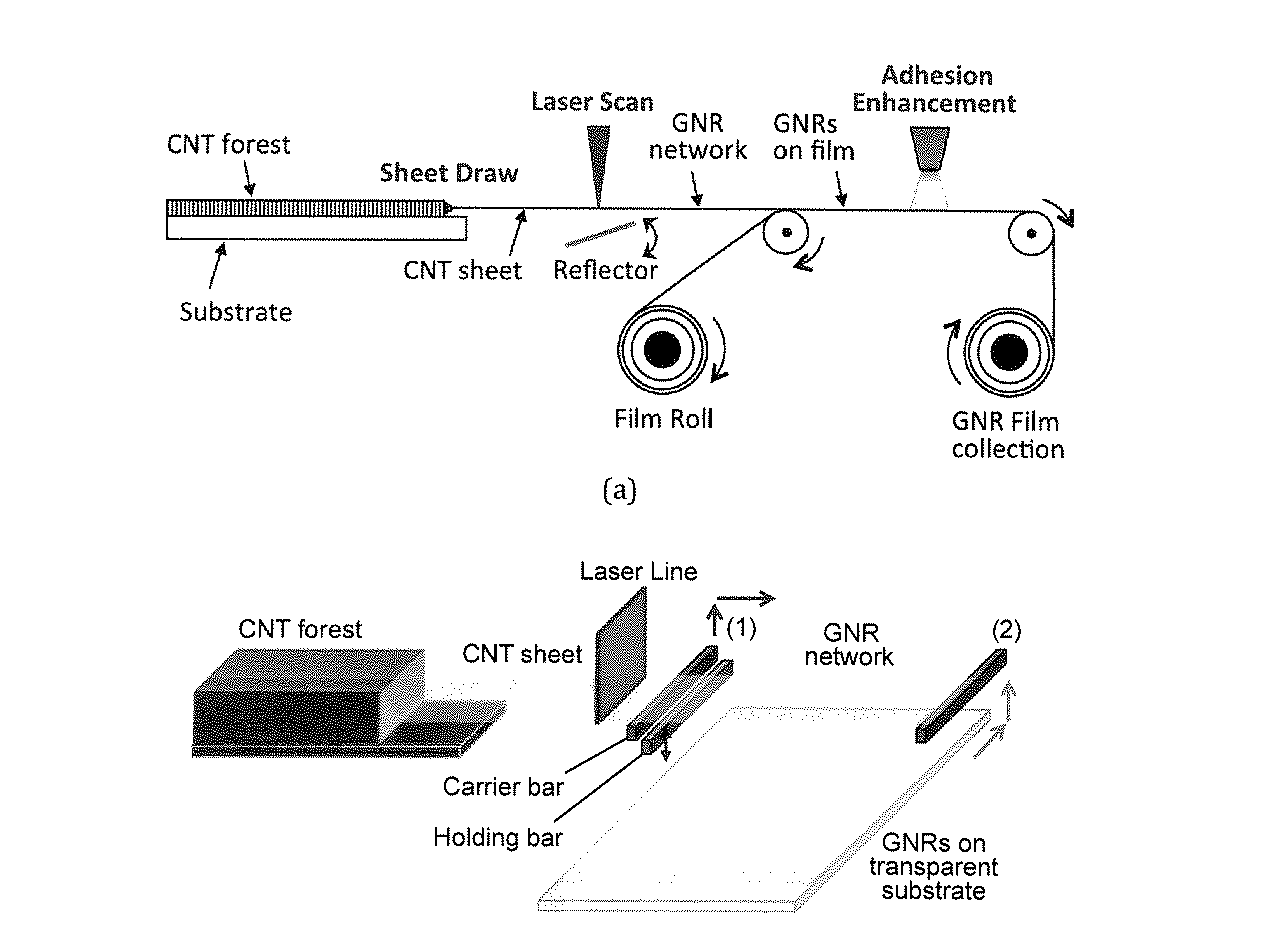Solid-State Fabrication of Graphene Nanoribbons and Their Networks
This invention is for fabricating freestanding graphene nanoribbons (GNRs) and GNR networks by unzipping carbon nanotubes (CNTs) in a freestanding CNT film using laser irradiation. It provides a novel solid-state process to fabricate freestanding GNRs and GNR networks.
Since CNTs are cylindrical shells made, in concept, by rolling graphene sheets into a seamless cylinder, the unzipping of CNTs is a new and very promising approach for controlled and large-scale GNR production. In this process, CNTs are unzipped (opened or fractured) along their longitudinal axes in such a way that the obtained structures are the desired GNRs. Another advantage of using CNTs as starting materials to produce GNRs resides in the fact that the vast existing knowledge on CNT synthesis and purification methods can be used to control and to optimize GNR fabrication.
Unzipping CNTs has been practiced in many different ways. However, these chemical and physical methods use strong acids, oxidizing agents, or other solvents. The wet-processes alter the properties of GNRs because of a high proportion of oxygen functionalities or particles and cause problems in device fabrication process because of wrinkles and folding of GNRs as well as positioning issues.
Our invention uses freestanding CNT sheets as the starting material and uses controlled laser irradiation in a preferred environment to convert (unzip) CNTs to GNRs and weld (joint) GNRs together to form GNR network. This is a solid-state fabrication process, which does not use any acids or solvents. Only this process is capable of fabricating large, freestanding GNRs and GNR networks and creating controllable CNT-graphene intramolecular junctions. Freestanding GNR networks are transparent conductive layers, which can be transferred easily onto any kind of substrates as a transparent electrode for various electronic and photonic applications. This solid state process is fast, clean, and scalable, and can be developed to a large-scale nanomanufacturing process.


